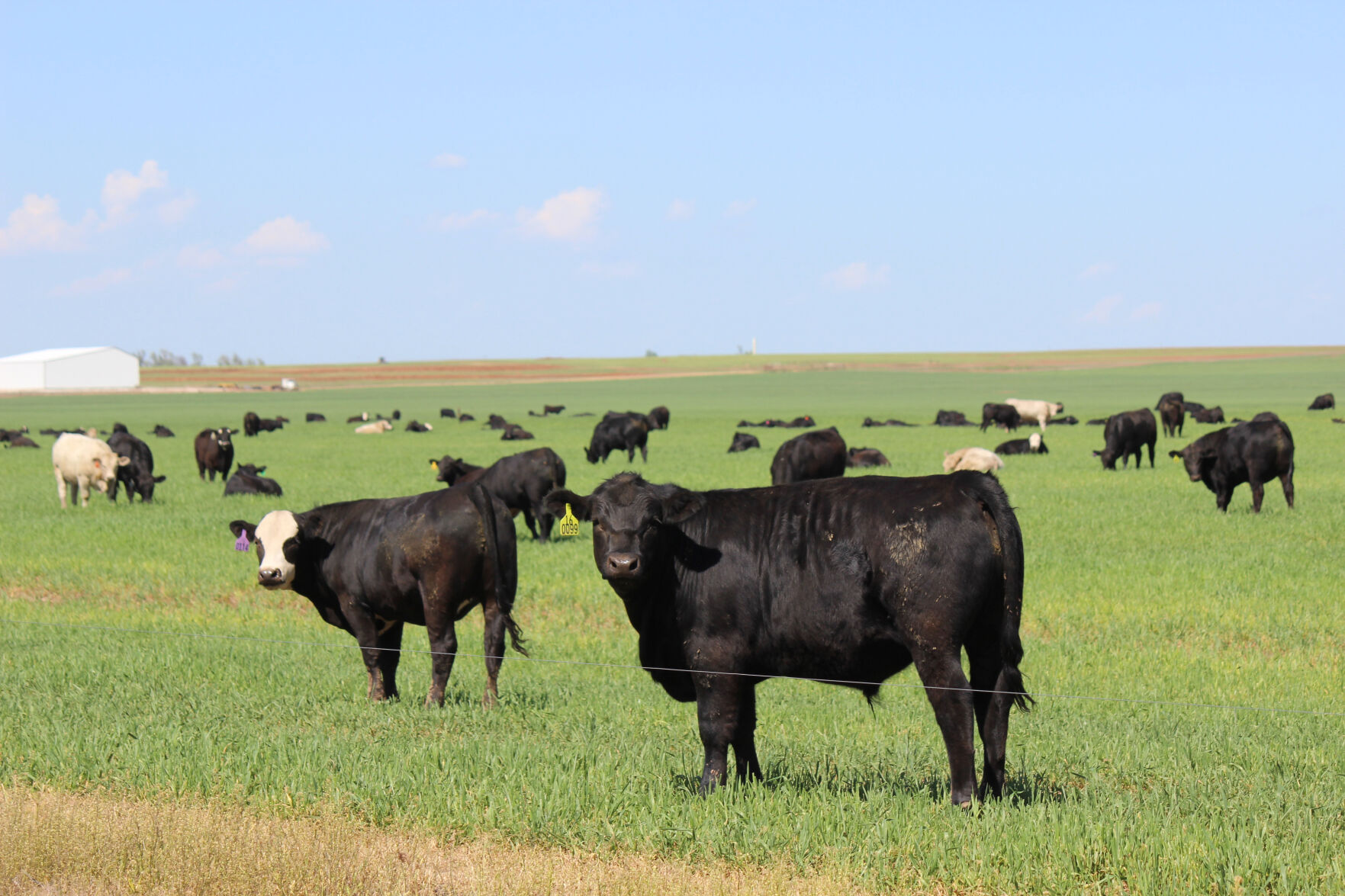Before long the calves that are at their mother’s side right now will be sold in the fall as stockers, and particularly with the rising price of feed and drought conditions, buyers could be looking for feeding alternatives this fall. Mary Drewnoski, beef systems specialist at the University of Nebraska-Lincoln, said planting cover crops for grazing is an option that could allow producers to buy more calves and feed them cost-effectively.
“We all know that fall time, when that spring rush of calves get weaned and you can buy calves at a cheaper price, but if your yard is full, you can only buy so many,” she said. “Cover crops may be a way to buy more and to grow them at a relatively low cost and work them into your feed yard at a later time.”
Drewnoski said corn silage ground is probably the best place to be thinking about planting cover crops and it can help capture more growing days. Corn silage comes off early enough, and if the timing is right, it is perfectly suited for fall or spring forages. The No. 1 influence on what to plant should be the planting date.
“Forages planted between Aug. 10 and Sept. 1 are considered fall forages,” Drewnoski explained. “These are considered cool season, winter sensitive, and include oats and brassicas such as rapeseed, turnips and radishes.”
Drewnoski said after Sept. 1 there is really no reason to plant winter sensitive crops, because they will not have very much growth.
“In this scenario you might as well switch to a spring forage that is a cool season forage and winter hardy,” she explained. “Rye, triticale or winter wheat are all good examples.”
Drewnoski does not recommend planting both winter sensitive and winter hardy forages together because the yield will not reach maximum capability in either time period.
“I really like corn silage because I can plant something that is winter sensitive and get more fall growth and actually graze those calves when I buy them in October and November,” Drewnoski said. “However, if it’s a later harvested crop, I suggest switching tactics a little bit and planting something that is winter hardy and use it mainly in the spring.”
Covering all the bases
“The quality of these cover crops can be quite high,” Drewnoski said. “For late summer crops we can get 1.3 to 2 pounds of gain per day. For the spring planted crops we can get as much as 3 pounds of gain.”
She said there is a lot of variability in the rate of gains, but it is not due to the quality of the forage, but rather the weather patterns.
“If we happen to have some wet events, especially if it’s warm and the ground is not frozen, we have tremendous losses due to trampling.”
For fall forages, she said producers can expect an average of about 66 days of grazing with a stocking rate of 1.2 calves per acre and 1.7 tons of dry matter per acre. Seed costs range from about $30 to $10 per acre depending on what is planted.
“You can apply nitrogen to fertilize it, which will cost about $20 to $30 an acre, but it does not pay back, especially with the later planted crops because it doesn’t have time to make use of the nitrogen,” Drewnoski said.
According to her research, when calves were grazed on oats plus some type of brassica, with no additional supplementation other than free choice mineral, calves gained an average of 1.9 pounds per day. Drewnoski said her favorite mix for late summer is oats and rapeseed.
“Rapeseed is pretty cheap and when combined with oats, it seems to provide extra gain for calves and lower seed costs compared to just oats,” she said. “Rapeseed also doesn’t produce a bulb like turnips and radishes, so it is easier to manage grazing to keep some residue on the ground. When you have that bulb, the calves don’t seem to know what to do with it, so they go and eat everything else first and then you sort of have to force them into eating the bottom part of the turnip or radish and then you end up with bare ground.”
Drewnoski said the earlier rapeseed is planted the better, because it will actually yield more than a purple topped turnip if it is planted earlier. The average cost per pound of grain is $0.54 per pound of grain.
When growing winter hearty species like cereal rye, it can quickly go from vegetative to fully headed.
“If you’re going to graze, I would suggest you don’t wait until it is 8 inches tall,” she said. “I think that’s too late and it’s really hard
to keep up with. The other thing I’d suggest is to not skimp on stocking rates. You need fairly high densities because it grows so fast.”
Lacey Vilhauer can be reached at 620-227-1871 or [email protected].




